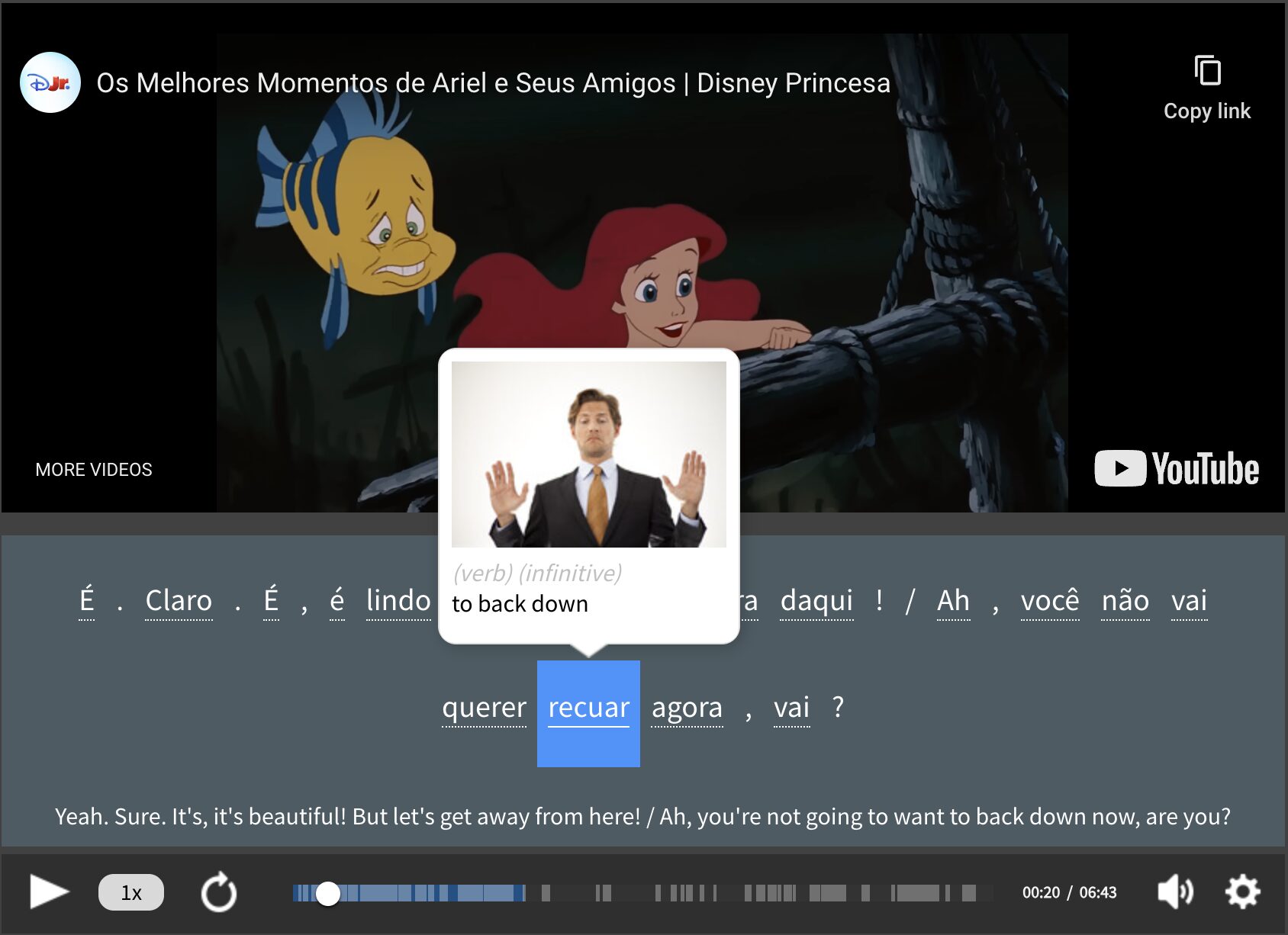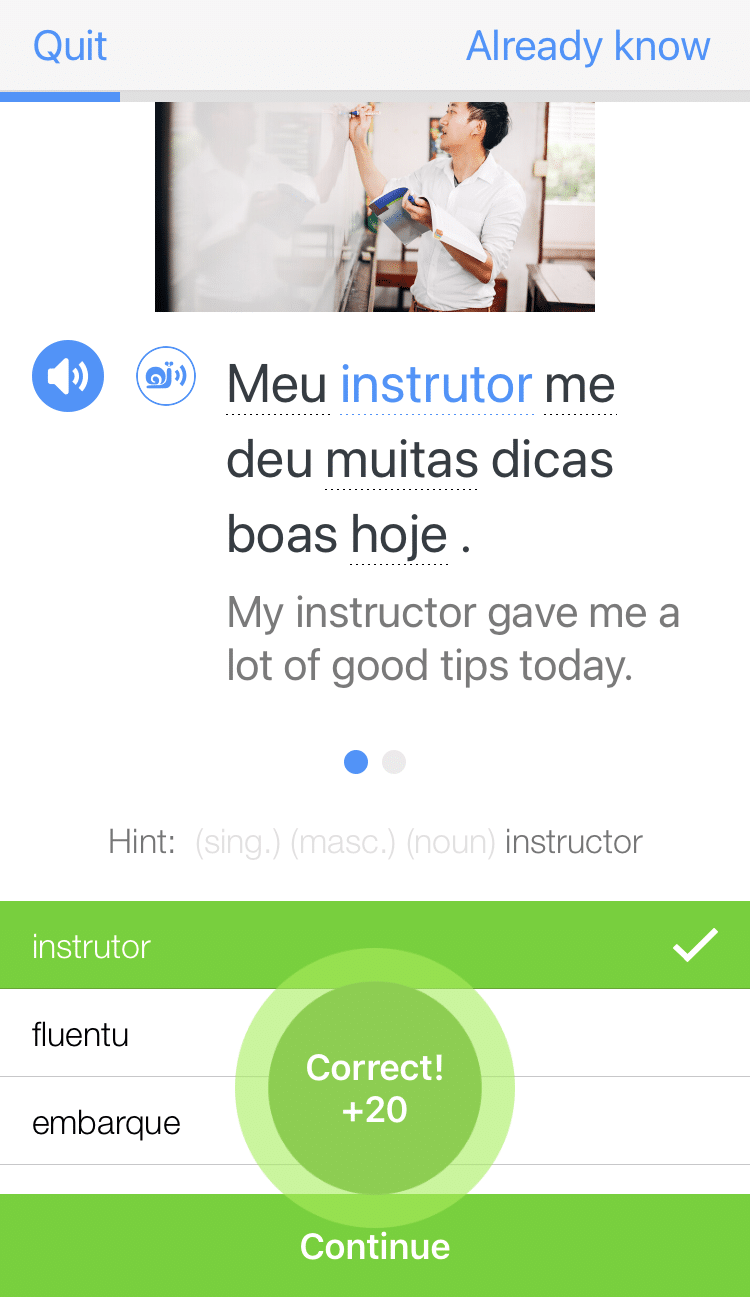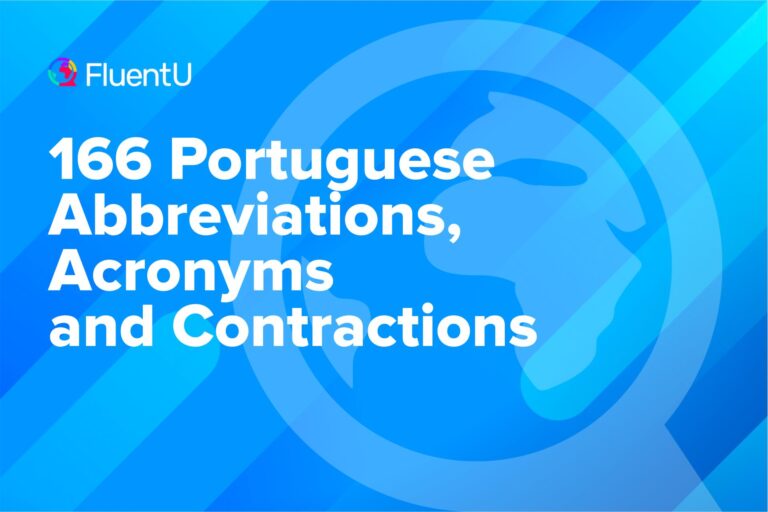How to Conjugate Portuguese Verbs

For English speakers, just the thought of conjugating verbs in Portuguese can be nerve-wracking—more tenses, more irregular verbs, more rules to follow.
But don’t ever let that discourage you. Everyone needs to start somewhere, and we’re here to make sure your learning experience runs smoothly.
Here’s how you can learn Portuguese verb conjugation from scratch, in just four simple steps.
Download: This blog post is available as a convenient and portable PDF that you can take anywhere. Click here to get a copy. (Download)
1. Who is performing the action?
In Portuguese, the person doing the verb will be one of the following:
| Person | English | Usage Notes |
|---|---|---|
| Eu | I/Me | |
| Tu | You (sing.) | Mostly used in Portugal and some parts of Brazil |
| Ele
Ela | He She | |
| Você | You (sing.) | Mostly used in Brazil Formal "you" in Portugal |
| Nós | We | |
| Vós | You (pl.) | Mostly used in Portugal |
| Eles
Elas | They (m.) They (f.) | Eles also works for groups with mixed gender |
| Vocês | You. (pl.) | Mostly used in Brazil Formal "you" in Portugal |
As you can see, the subject of the verb may differ slightly depending on which Portuguese dialect you’re learning. Be sure to double-check which rules apply in your case.
2. Identify Portuguese verb tenses
Knowing your basic grammar rules can help you make sense of the verbs you’re trying to learn.
With that in mind, Portuguese verbs are categorized according to the following moods:
- Indicative: A form that denotes a true statement or a positive belief. In Portuguese, the indicative tenses are the present, preterite, past imperfect, pluperfect, future and conditional.
- Subjunctive: Used when talking about things that are highly uncertain. The subjunctive consists of the present, past imperfect and future tenses.
- Imperative: Denotes a command. Instead of tenses, imperatives have two states: negative and positive.
Take note of those rules and try to keep them in mind once you start revising your conjugations.
3. Start with regular verbs
Portuguese verb endings can seem a little overwhelming at first. For this reason, it’s recommended that you start with regular verb endings before tackling any irregular verbs—they’re easier to suss out, as they follow a clear-cut pattern.
To conjugate a regular Portuguese verb, you need to look at its infinitive form. All regular verb infinitives end in -ar, -ir or –er. Remove these endings to get the stem of the verb, then add the endings that correspond to the person doing the action.
We’ll show you how this works in the present tense with each of these verbs:
| -AR Verb Falar (To speak) | -ER Verb Correr (To run) | -IR Verb Partir (To depart) |
|---|---|---|
| Eu falo
(I speak) | Eu corro
(I run) | Eu parto
(I depart) |
| Tu falas
(You speak) | Tu corres
(You run) | Tu partes
(You depart) |
| Ele/Ela/Você fala
(He/She speaks; You speak) | Ele/Ela/Você corre
(He/She runs; You run) | Ele/Ela/Você parte
(He/She departs; You depart) |
| Nós falamos
(We speak) | Nós corremos
(We speak) | Nós partimos
(We depart) |
| Vós falais
(You all speak) | Vós correis
(You all run) | Vós partis
(You all depart) |
| Eles/Elas/Vocês falam
(They/You all speak) | Eles/Elas/Vocês correm
(They/You all run) | Eles/Elas/Vocês partem
(They/You all depart) |
Regular verb conjugations for all indicative tenses
If you’re visually inclined, regular verb endings can be organized into tables. Either pick a few regular -ar, -er and -ir verbs and make a grid with the different verb subjects and endings, or opt for a general table with all the regular endings.
To make everything more manageable, work on your regular indicative verb tenses first before tackling the subjunctive. We’ll help you get started by showcasing how you’d put together the verb tables for indicative verbs:
-AR verb endings
-ER verb endings
-IR verb endings
4. Learn common irregular verbs
Start with a few of the core essentials, then work your way toward mastering any other irregular verbs that might be of interest.
We’ll get you started with four irregular verbs, conjugated in the present (and you can use one of the verb conjugators linked below to identify other tenses):
Ser (to be)
Use ser when talking about permanent characteristics.
Eu sou
— I am
Tu és
— You are
Ele
/ Ela
/ Você é
— He/She is; You are
Nós somos
— We are
Vós sois
— You all are
Eles
/ Elas
/ Vocês são
— They/You all are
Estar (to be)
Like ser, estar means “to be.” However, this verb is used when talking about temporary conditions: places, feelings and so on.
Eu estou
— I am
Tu estás
— You are
Ele
/ Ela
/ Você está
— He/She is; You are
Nós estamos
— We are
Vós estais
— You all are
Eles
/ Elas
/ Vocês estão
— They/You all are
Vir (to come)
Eu venho
— I come
Tu vens
— You come
Ele
/ Ela
/ Você vem
— He/she comes; You come
Nós vimos
— We come
Vós vindes
— You all come
Eles
/ Elas
/ Vocês vêm
— They/You all come
Ter (to have)
Eu tenho
— I have
Tu tens
— You have
Ele
/ Ela
/ Você tem
— He/she has; You have
Nós temos
— We have
Vós tendes
— You all have
Eles
/ Elas
/ Vocês têm
— They/You all have
As you can see, these verbs don’t really follow a fixed pattern. If you like having a visual aid, though, you can still plot them in a grid like we showed you with the other indicative verbs.
To help with memorization, you could try color-coding or highlighting the irregular endings you’ve stumbled across.
Tips to Learn Portuguese Verb Conjugation
Now we’ve explored the ins and outs of verb conjugation, here are a few strategies that’ll help make those tenses stick:
- Use an online verb conjugator like Conjuga-me or Reverso to check up on any verb tenses and endings you might be unsure about.
- Pick up a Portuguese textbook. Textbooks are a great resource if you’re looking for some offline reference material. Popular options include 501 Portuguese Verbs (for both Brazilian and European Portuguese learners) and Portuguese Verb Tenses (best suited for Brazilian Portuguese learners).
- Make verb conjugation flashcards. Flashcards (hand-made or in app form) can also help you memorize your verbs. Just pick a few infinitives and try to conjugate them in the tense that you’re focusing on.
- Do grammar drills and online exercises for extra practice. Try this collection of European Portuguese verb conjugation exercises or this collection of Brazilian Portuguese verb conjugation quizzes. The FluentU app also offers adaptive quizzes based on the Portuguese media clips you’ve watched.
FluentU takes authentic videos—like music videos, movie trailers, news and inspiring talks—and turns them into personalized language learning lessons.
You can try FluentU for free for 2 weeks. Click here to check out the website or download the iOS app or Android app.
This is a lot of groundwork to begin with, so take your time. Everyone works at a different pace, and it may take a while before you venture from regular to irregular verbs.
As you become more and more fluent, you’ll notice that these verbs will become easier to grasp—until it feels completely natural to use them. Just be patient and keep working on those conjugations; you’ll nail them soon enough!
And One More Thing...
If you're like me and enjoy learning Portuguese through movies and other media, you should check out FluentU. With FluentU, you can turn any subtitled content on YouTube or Netflix into an engaging language lesson.
I also love that FluentU has a huge library of videos picked specifically for Portuguese learners. No more searching for good content—it's all in one place!

One of my favorite features is the interactive captions. You can tap on any word to see an image, definition, and examples, which makes it so much easier to understand and remember.
And if you're worried about forgetting new words, FluentU has you covered. You'll complete fun exercises to reinforce vocabulary and be reminded when it’s time to review, so you actually retain what you’ve learned.
You can use FluentU on your computer or tablet, or download the app from the App Store or Google Play. Click here to take advantage of our current sale! (Expires at the end of this month.)










